Coronavirus (COVID-19): modelling the epidemic (issue no. 61)
Latest findings in modelling the COVID-19 epidemic in Scotland, both in terms of the spread of the disease through the population (epidemiological modelling) and of the demands it will place on the system, for example in terms of health care requirement.
Coronavirus (COVID-19): modelling the epidemic in Scotland (Issue No. 61)
Background
This is a report on the Scottish Government modelling of the spread and level of Covid-19. This updates the previous publication on modelling of Covid-19 in Scotland published on 15th July 2021. The estimates in this document help the Scottish Government, the health service and the wider public sector plan and put into place what is needed to keep us safe and treat people who have the virus.
This edition of the research findings focuses on the epidemic as a whole, looking at estimates of R, growth rate and incidence as well as local measures of change in the epidemic.
In Scotland, the modelled estimate for R is between 0.9 and 1.2, with the growth rate between 1% and 4% based on the period up to 19th July.
There is uncertainty around the status of the epidemic in Scotland, which may suggest it is at a turning point. Cases have been decreasing over the past two weeks. This uncertainty is reflected in the growth rate being positive and the R estimate crossing 1. The intervals of the R and growth rate estimates do not exactly correspond to each other due to the submission of different independent estimates and rounding in presentation.
Key Points
- The reproduction rate R in Scotland is currently estimated as being between 0.9 and 1.2, based on the period up to 19th July. The lower and upper limits have decreased since last week.
- The number of new daily infections for Scotland is estimated as being between 119 and 227, per 100,000 people, based on the period up to 19th July.
- The growth rate for Scotland is currently estimated as being between 1% and 4%, based on the period up to 19th July. The lower and upper limits have decreased since last week.
- Average contacts have remained at a similar level in the last two weeks (comparing surveys pertaining to 24th June - 30th June and
8th July - 14th July) with a current level of 4.0 daily contacts. - Contacts within work have decreased compared to two weeks prior by 19% whereas there has been a slight rise in contacts had within the home setting, increasing by 6%. Average contacts within the other setting (contacts had outside of the work, school and home) have remained at similar levels over the same period.
- Mean contacts across all age groups have either remained stable or shown a reduction in comparison to two weeks prior with the exception of those aged between 18-29 reporting an increase of 17%.
- The highest number of interactions are reported between those aged 18-29 with each other. The biggest decrease in the total number of contacts between age groups in the last two weeks is seen amongst those aged 30-49 with those under 18, decreasing by at least 43%.
- The proportion of participants visiting different locations remains at similar levels across the majority of locations with those visiting a pub or restaurant reporting the highest increase from 40% to 43% in the last two weeks.
- Hospitalisations from the increase in cases during the last few weeks have likely plateaued, and the future increase or decrease in hospital occupancy and intensive care use is highly uncertain, and depends on both current infection levels and the impact of the recent move to level 0 nationally.
- Modelled rates of positive tests per 100K using data to 19th July indicate that, for the week commencing 1st August 2021, there are 26 local authorities with at least a 75% probability of exceeding 100 cases per 100K.
- Of these, 20 local authorities are expected to exceed 150 cases per 100K with at least a 75% probability. Only one local authority (Renfrewshire) is expected to exceed 300 cases per 100K with this probability.
- Overall, relative to the peak reported in the previous report, wastewater Covid-19 levels declined nationally. This general trend is not followed at all sites (as of 20th July), with some showing more static levels. This will be monitored closely over the next few weeks.
- The Scottish Government has started to model the number of people likely to experience long Covid symptoms. This modelling estimates that on 8 August 2021 between 0.7% and 1.9% of the population are projected to experience symptoms for 12 weeks or more after their first suspected Covid infection in Scotland.
Recent cases
Figure 1 shows the number of cases reported in Scotland between May and July 2021. The vertical dashed lines indicate the cut off points for each of the modelling inputs; after these dates, the number of cases is not incorporated into the outputs.
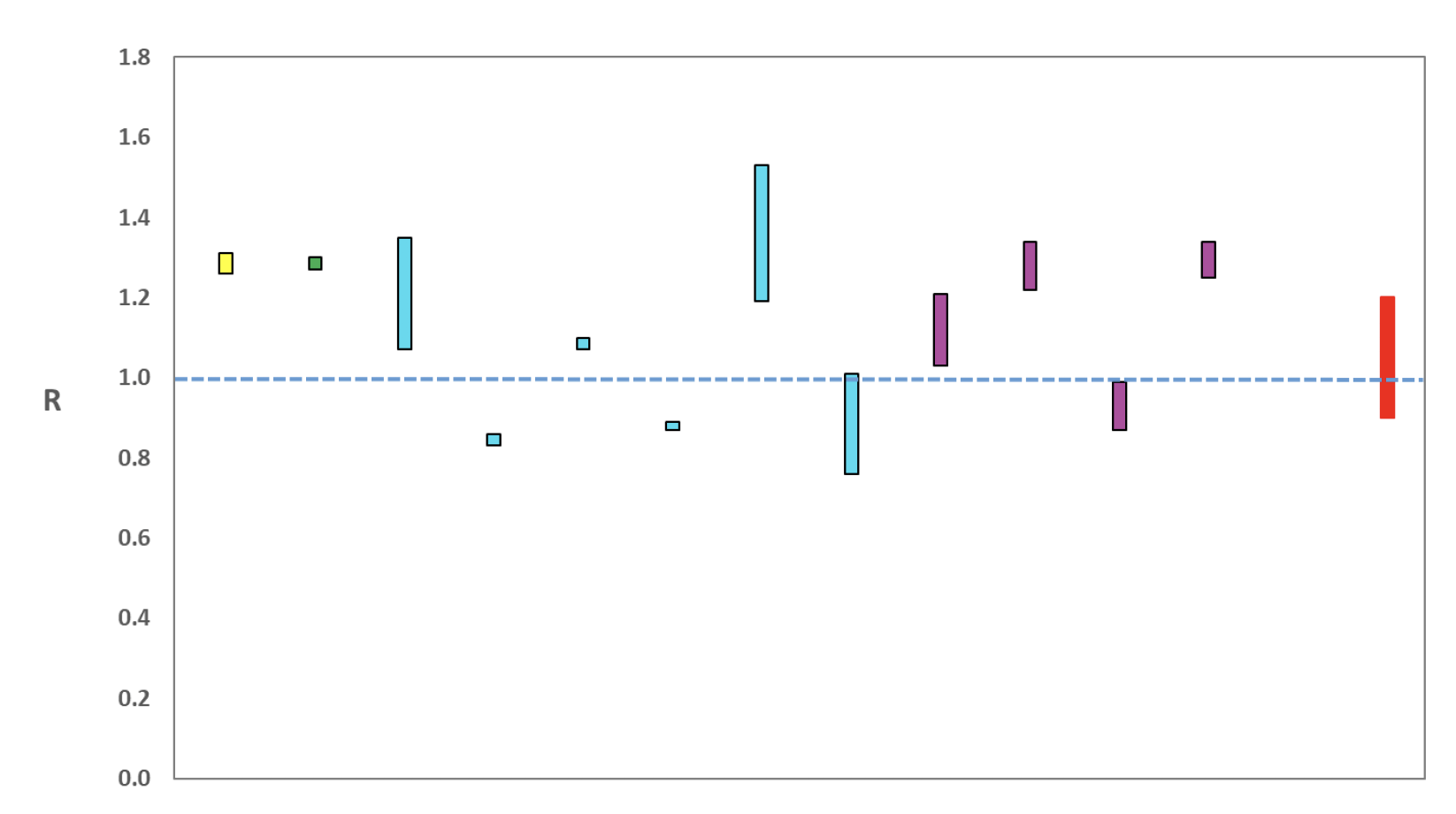
This report covers the period up to 14th July for contact patterns (indicated by dashed line 1). Wastewater data is provided to 19th July (dashed line 2). The estimates of R, incidence, growth rates, the modelled rates of positive tests per 100k, and the medium term projections by the Scottish Government of infections, hospitalisations and ICU beds use data to 19th July (dashed line 2).
Overview of Scottish Government Modelling
Modelling outputs are provided here on the current epidemic in Scotland as a whole, based on a range of methods. Because it takes a little over three weeks on average for a person who catches Covid-19 to show symptoms, become sick, and either die or recover, there is a time lag in what our model can tell us about any re-emergence of the epidemic and where in Scotland this might occur.
However modelling of Covid-19 deaths is an important measure of where Scotland lies in its epidemic as a whole. In addition, the modelling groups that feed into the SAGE consensus use a range of other data along with deaths in their estimates of R and the growth rate. These outputs are provided in this research findings. The type of data used in each model to estimate R is highlighted in Figure 2.
We use the Scottish Contact Survey (SCS) to inform a modelling technique based on the number of contacts between people. Over time, a greater proportion of the population will be vaccinated. This is likely to impact contact patterns and will become a greater part of the analysis going forwards.
The logistical model utilises results from the epidemiological modelling, principally the number of new infections. The results are split down by age group, and the model is used to give a projection of the number of people that will go to hospital, and potentially to ICU. This will continue to be based on both what we know about how different age groups are affected by the disease and the vaccination rate for those groups.
What the modelling tells us about the epidemic as a whole
The various groups which report to the Scientific Pandemic Influenza Group on Modelling (SPI-M) use different sources of data in their models (i.e. deaths, hospital admissions, cases) so their estimates of R are also based on these different methods.
R is an indicator that lags by two to three weeks and therefore does not reflect any behavioural changes that have happened during this time. In particular, the recent decline in the number of new daily cases in Scotland may not yet be fully reflected in the R and growth rate estimates. The decline in new cases suggests it is possible that the current value of R in Scotland could be below 1.
SAGE's consensus view across these methods as of 21st July, using data to 19th July, was that the value of R in Scotland was between 0.9 and 1.2 (see Figure 2)[1].
This week the Scottish Government presented two outputs to SPI-M. The first uses confirmed cases as published by Public Health Scotland (PHS). The second uses instead wastewater data to estimate the number of cases. Both outputs are shown in Figures 2 and 3.
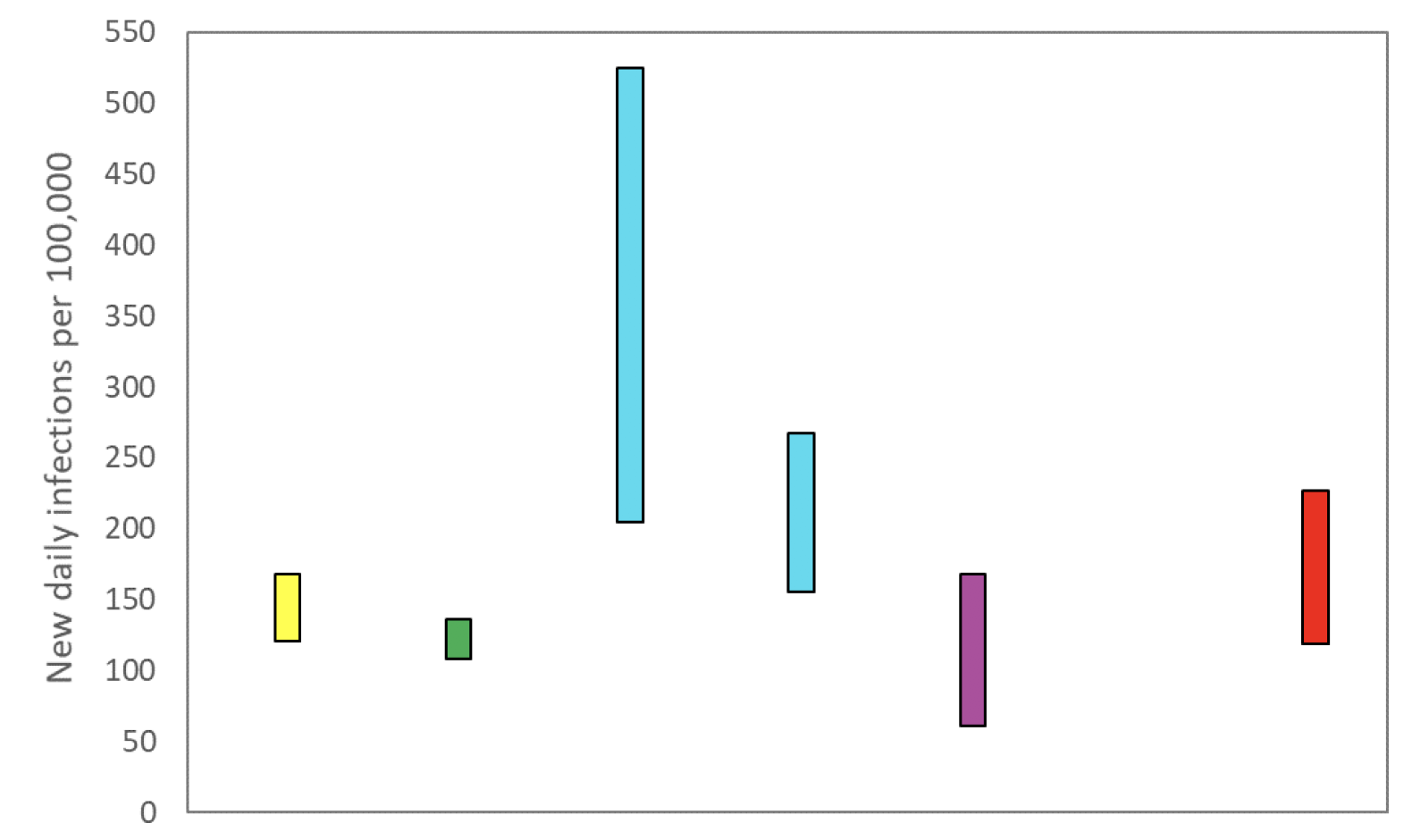
Source: Scientific Advisory Group for Emergencies (SAGE).
The various groups which report to the Scientific Pandemic Influenza Group on Modelling (SPI-M) use different sources of data in their models to produce estimates of incidence (Figure 3). SPI-M's consensus view across these methods, using data to 19th July, was that the incidence of new daily infections in Scotland was between 119 and 227 new infections per 100,000. This equates to between 6,500 and 12,400 people becoming infected each day in Scotland.
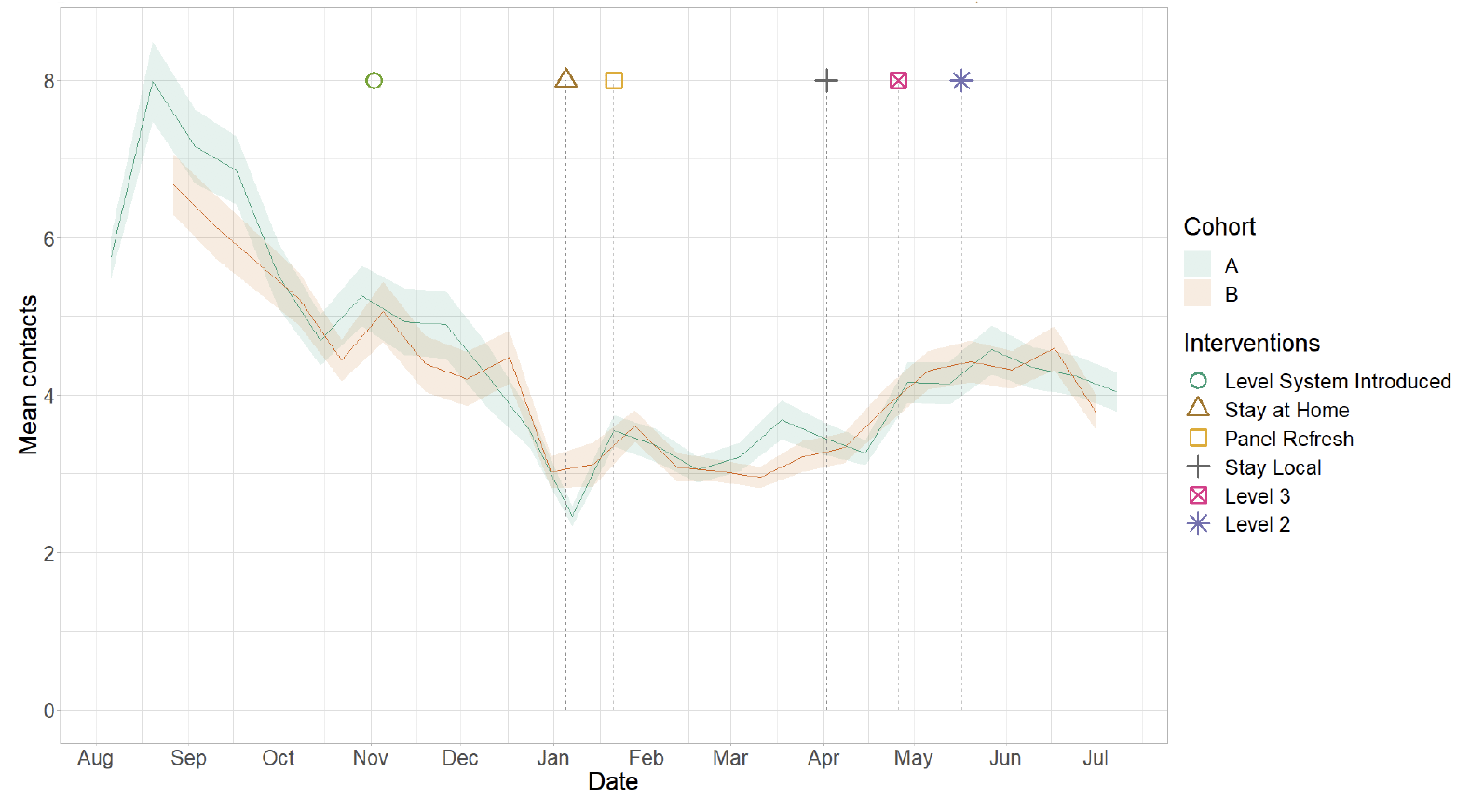
Source: Scientific Pandemic Influenza Group on Modelling (SPI-M).
The consensus from SAGE for this week is that the growth rate in Scotland is between 1% and 4% per day using data to 19th July. The lower and upper limits have decreased since last week.
What we know about how people's contact patterns have changed
Average contacts have remained at a similar level in the last two weeks (comparing surveys pertaining to 24th June - 30th June and 8th July - 14th July) with a current level of 4.0 daily contacts as seen in Figure 4. Contacts within the work have decreased compared to two weeks prior by 19% whereas there has been a slight rise in contacts had within the home setting, increasing by 6%. Average contacts within the other setting (contacts had outside of the work, school and home) have remained at similar levels over the same period.
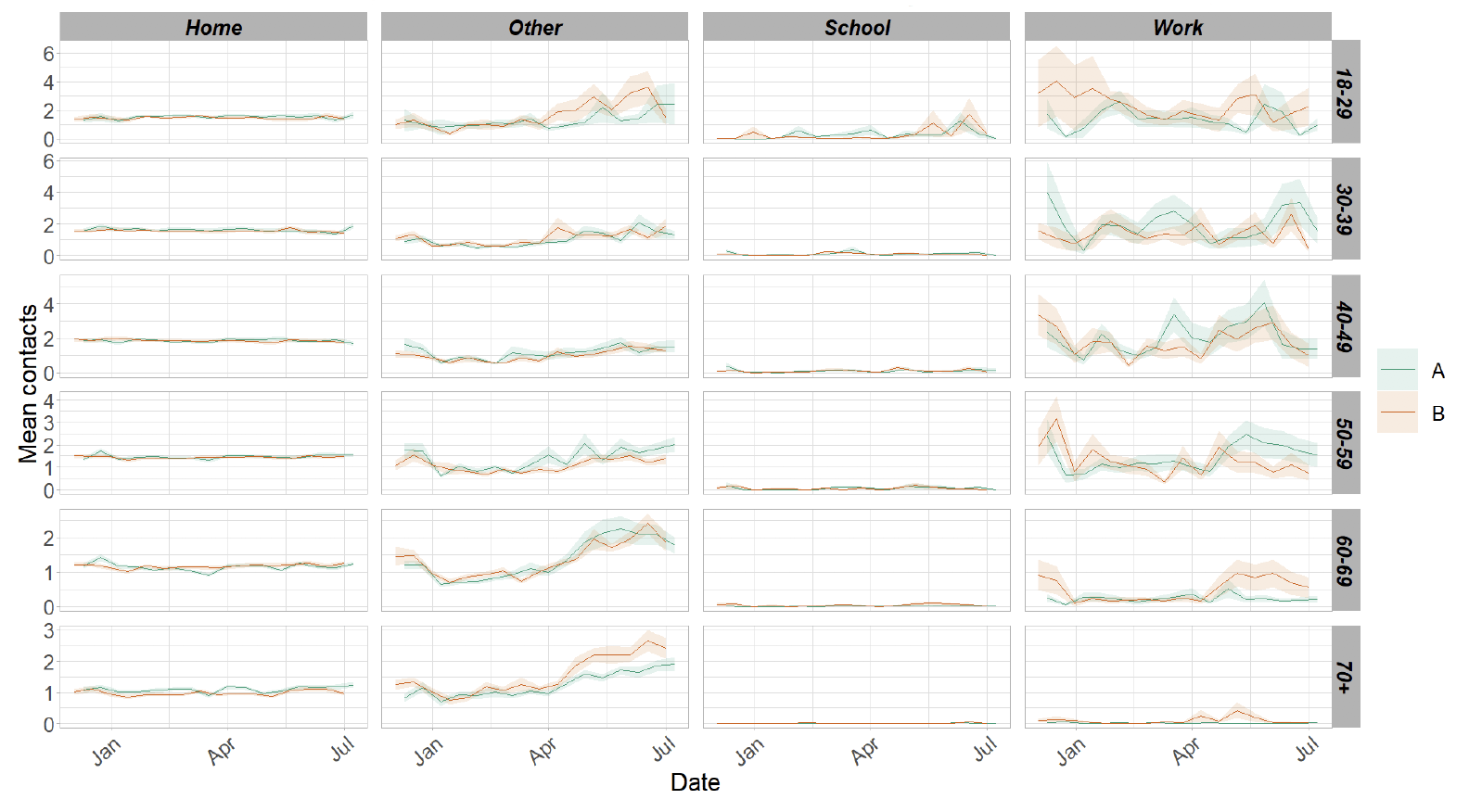
Figure 5 shows how contacts change across age group and setting. Mean contacts across all age groups have either remained stable or shown a reduction in comparison to two weeks prior with the exception of those aged between 18-29 reporting an increase of 17%. The increase in this age group is largely driven a rise in contacts within the work setting for those aged between 18-29.
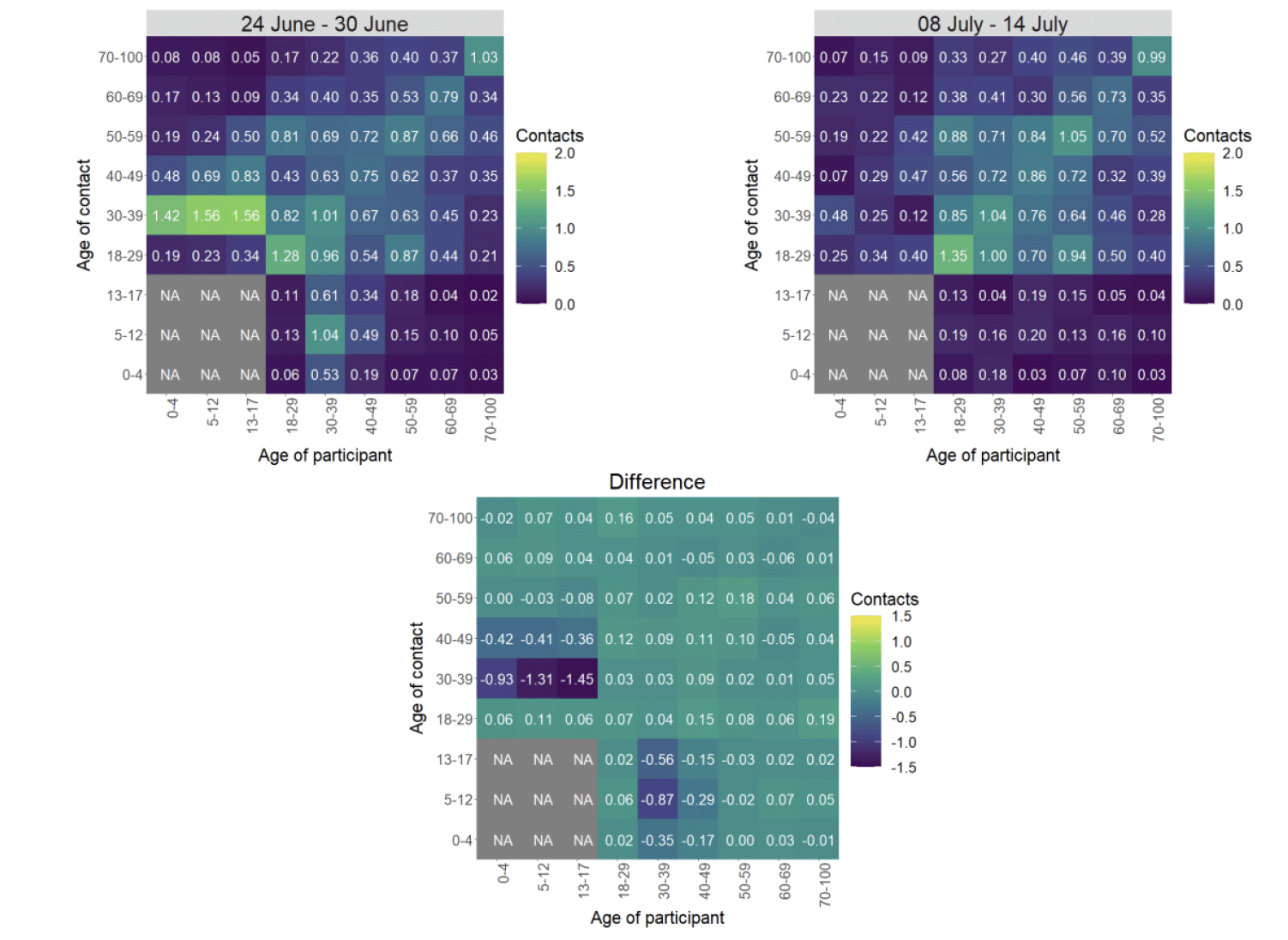
The heatmaps in Figure 6 show the mean overall contacts between age groups for the weeks relating to 24th June - 30th June and 8th July - 14th July and the difference between these periods.
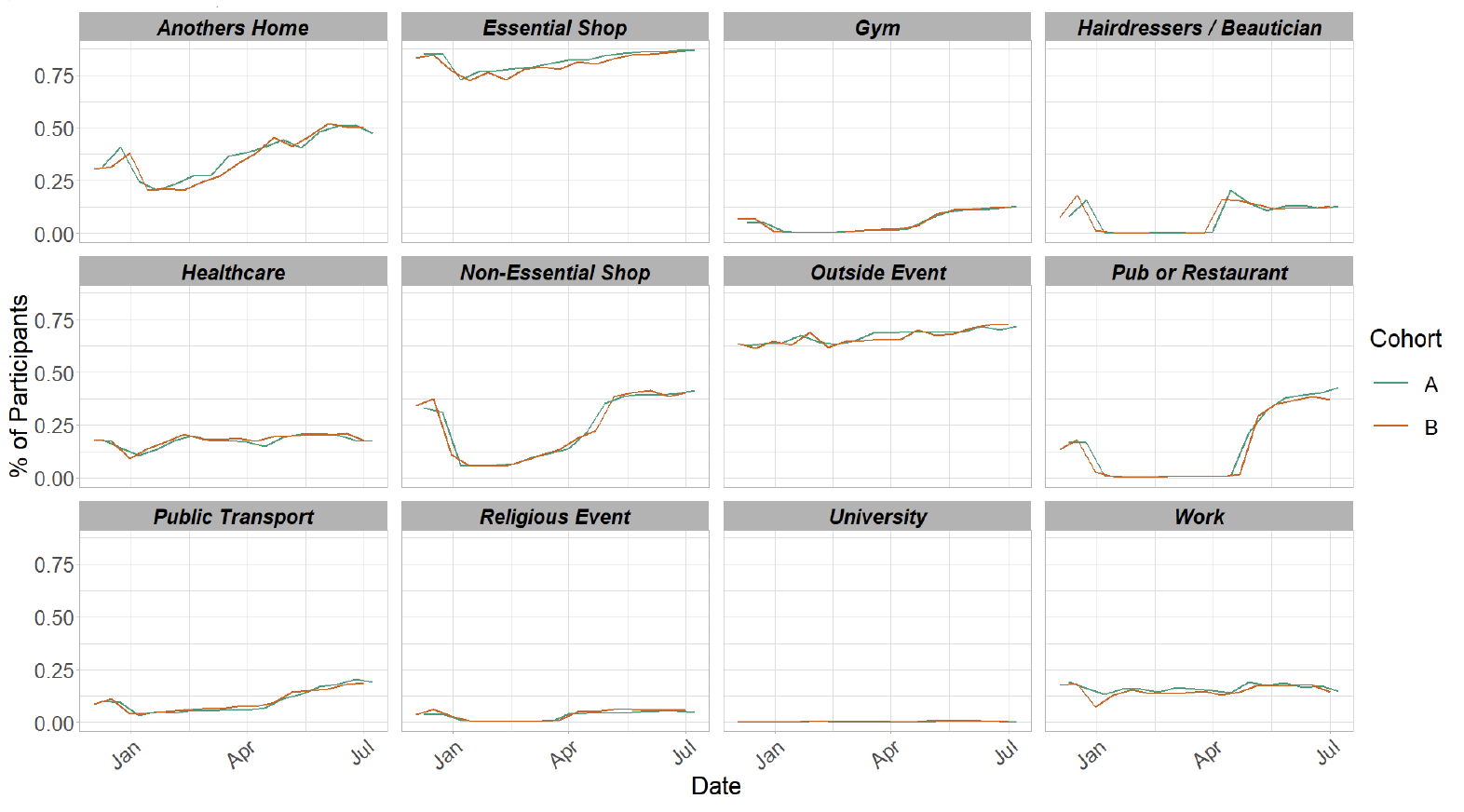
As seen in Figure 7, the proportion of participants visiting different locations remains at similar levels across the majority of locations with those visiting a pub or restaurant reporting the highest increase from 40% to 43% in the last two weeks
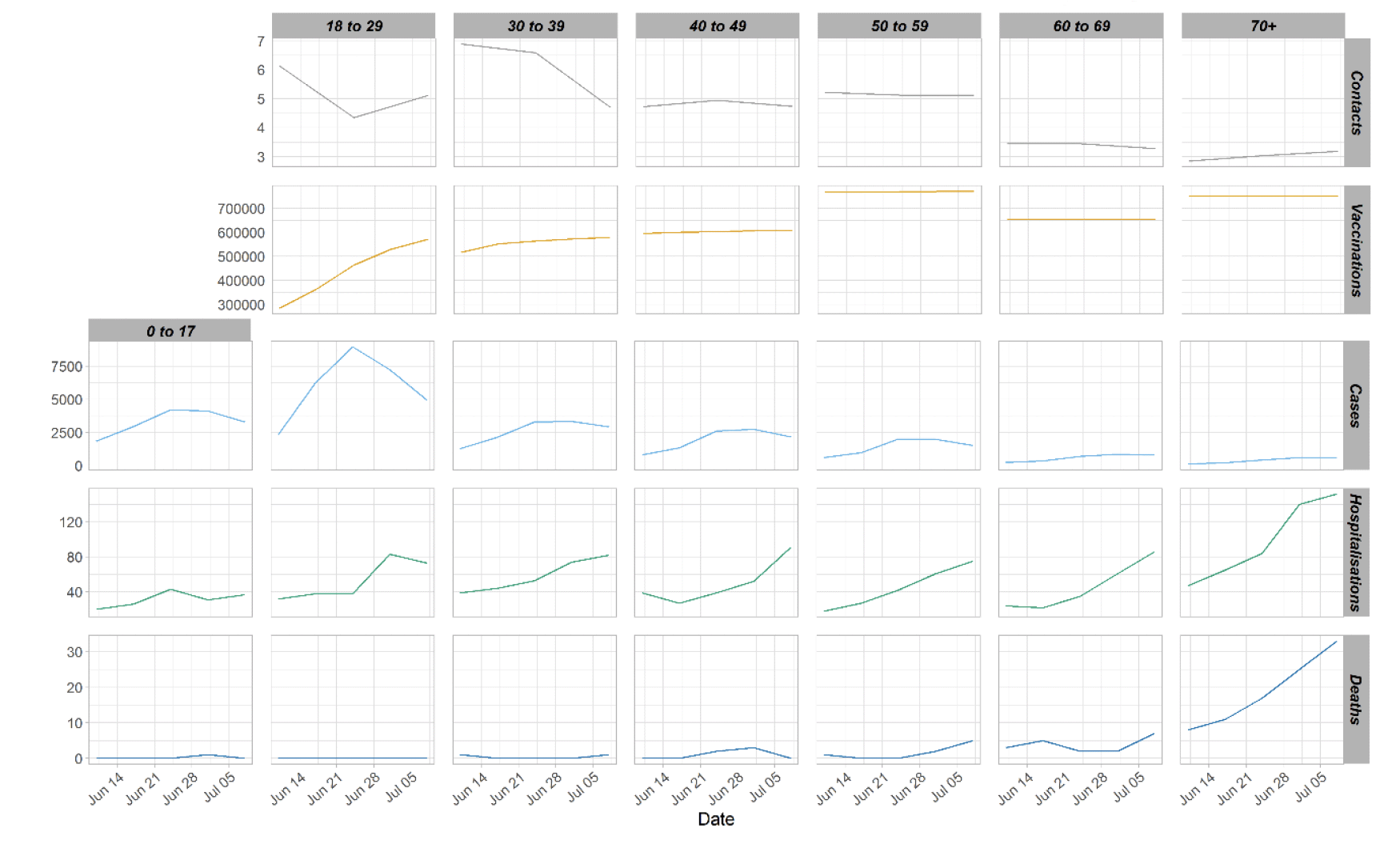
Vaccinations and contacts patterns
From Figure 8, it can be seen that the older age groups have fewer contacts and more vaccinations than the youngest age group. They also have the lowest weekly case number comparatively to the younger age groups. Despite that, they have similar, or higher for the oldest age group, weekly hospitalisation levels and deaths to that seen with the younger age groups.
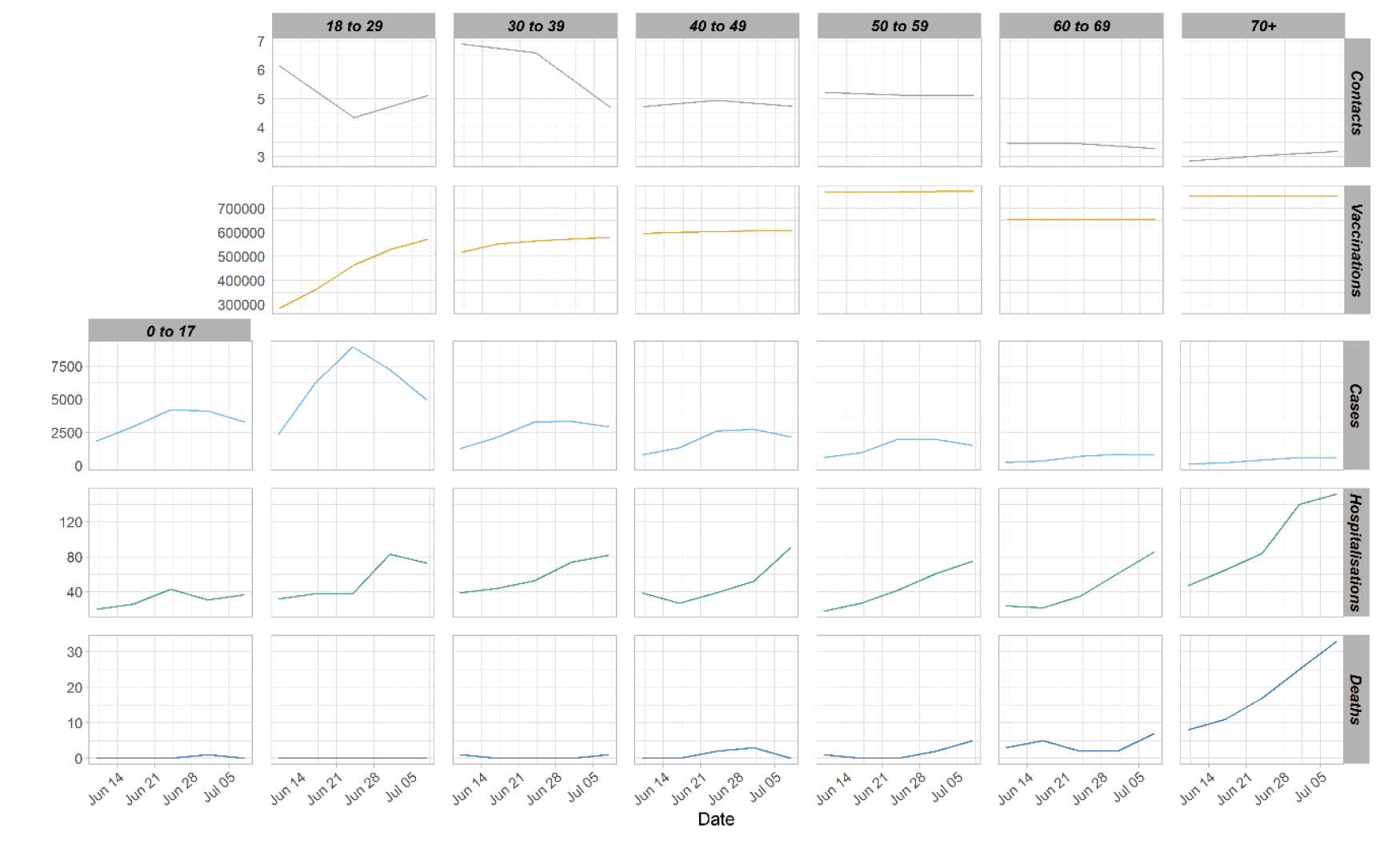
What the modelling tells us about estimated infections as well as Hospital and ICU bed demand
The Scottish Government assesses the impact of Covid-19 on the NHS in the next few weeks in terms of estimated number of infections. There is also uncertainty in the current level of infections, with confirmed cases having fallen, but other measures such as waste water and test positivity rate remaining high. Figure 9 shows two projections. 'Worse' assumes that infections have remained at a plateau for the last few weeks, and that behaviour changed instantaneously after the whole of Scotland moved to Level 0 on 19th July. 'Better' assumes that infections have fallen at the same rate as confirmed cases and that behaviour changes gradually over a period of months.[5]
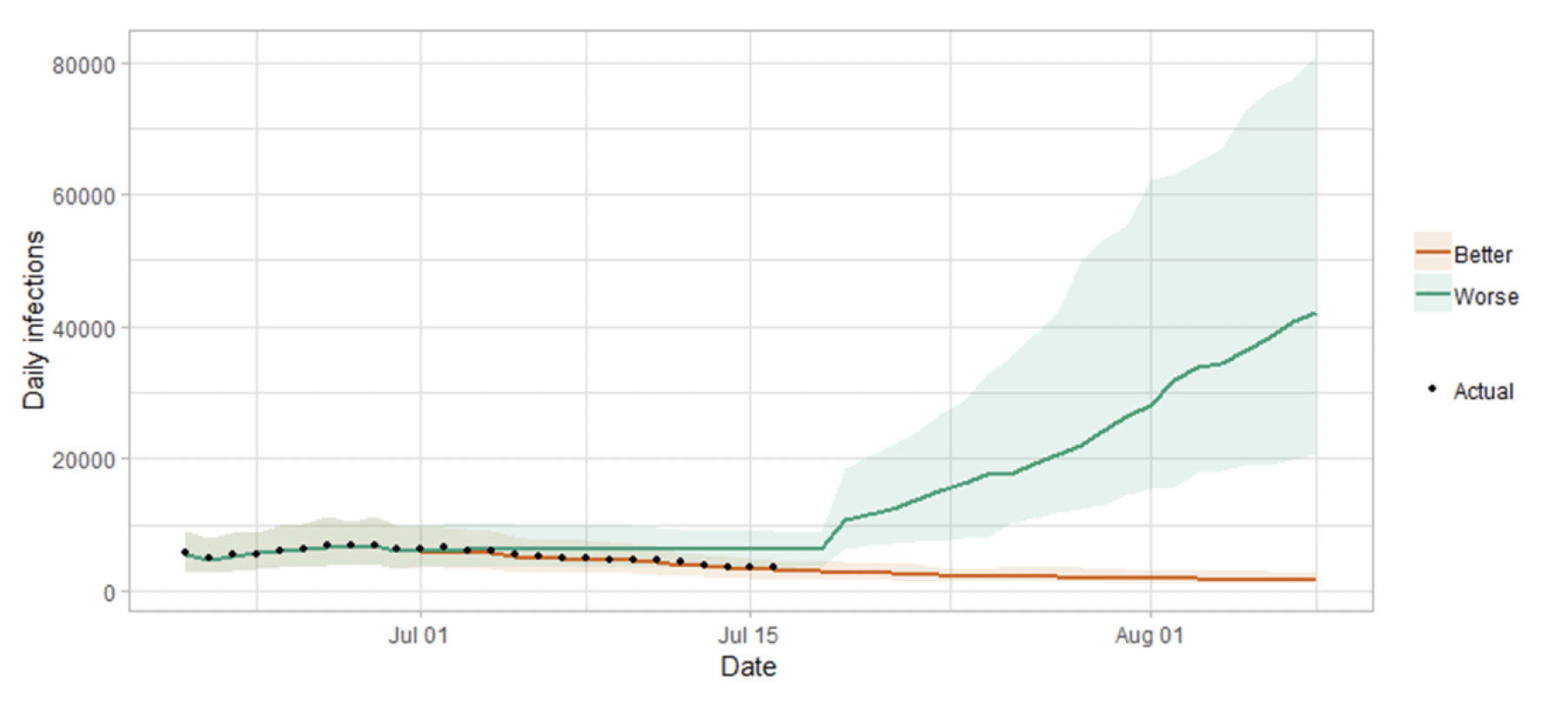
There is uncertainty as to whether infections will increase or decrease in coming weeks. This will drive whether hospital beds and intensive care beds also continue to rise.
Figure 10 shows the impact of the projections on the number of people in hospital. The modelling includes all hospital stays, whereas the actuals only include stays up to 28 days duration that are linked to Covid-19.
Hospitalisations from the recent increase in cases have likely plateaued, and the future increase or decrease in hospital occupancy and intensive care use is highly uncertain, and depends on both current infection levels and the impact of the move to level 0 nationally.
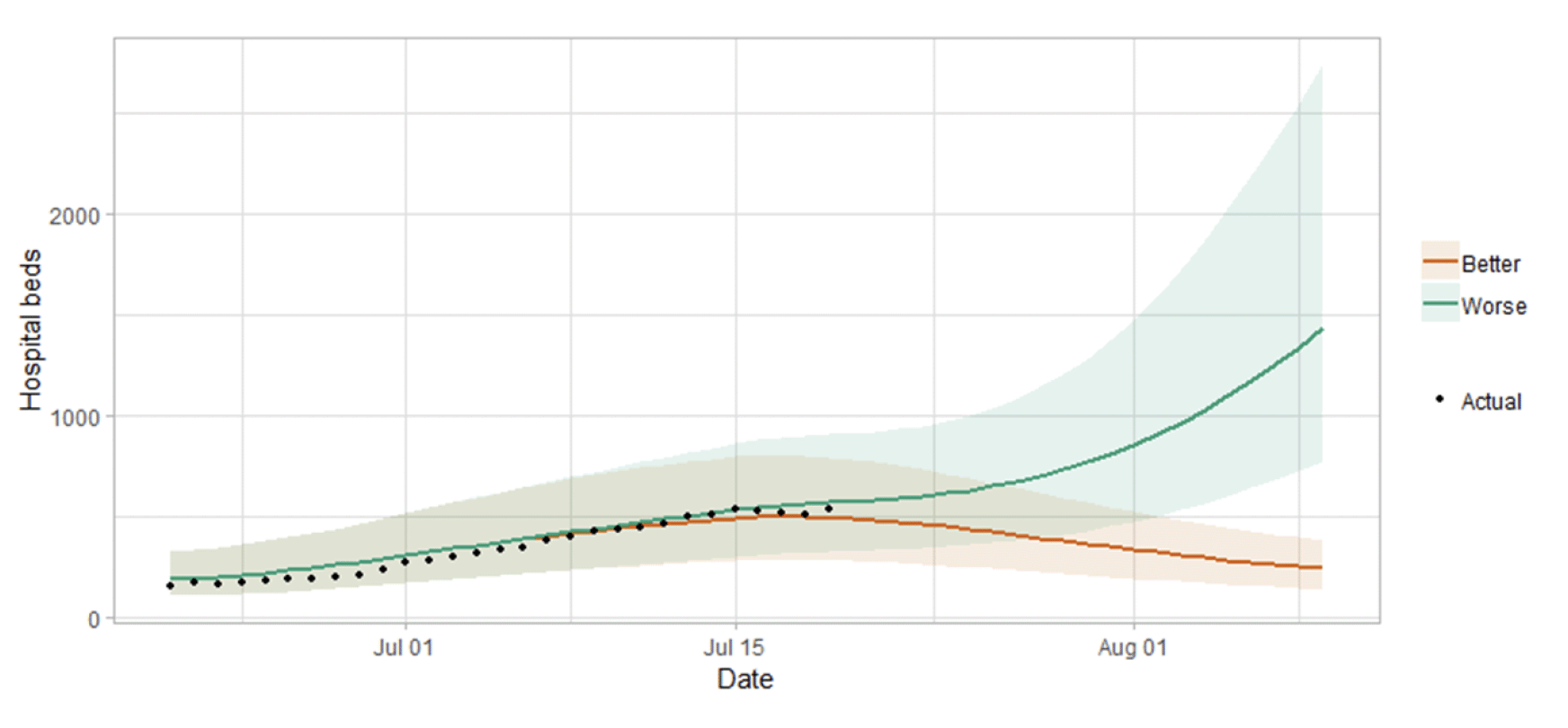
Figure 11 shows the impact of the projection on ICU bed demand.
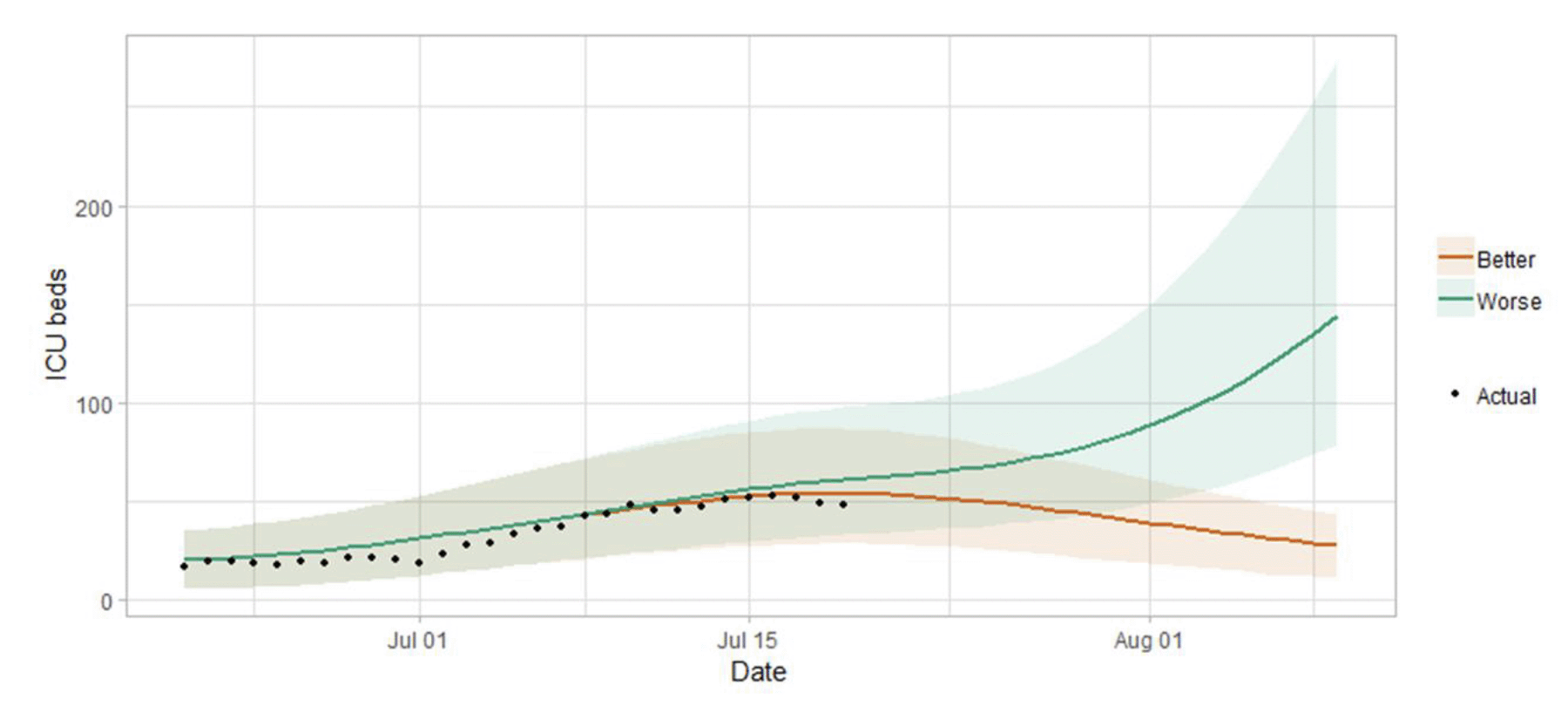
A comparison of the actual data against historical projections is included in the Technical Annex.
What the modelling tells us about projections of hospitalisations and deaths in the medium term
SAGE produces projections of the epidemic[8] (Figure 12), combining estimates from several independent models (including the Scottish Government's logistics modelling, as shown in Figures 9-11). These projections are not forecasts or predictions. They represent a scenario in which the trajectory of the epidemic continues to follow the trends that were seen in the data up to 19th July and do not include the effects of any future policy or behavioural changes.
The delay between infection, developing symptoms, the need for hospital care, and death means they will not fully reflect the impact of behaviour changes in the two to three weeks prior to 19th July. Projecting forwards is difficult when the numbers of admissions and deaths fall to very low levels, which can result in wider credible intervals reflecting greater uncertainty. The interquartile range can be used, with judgement, as the projection from which estimates may be derived until the 10th August, albeit at lower confidence than the 90% credible interval.
These projections include the potential impact of vaccinations over the next few weeks. Modelling groups have used their expert judgement and evidence from Public Health England, Scottish Universities & Public Health Scotland, and other published efficacy studies when making assumptions about vaccine effectiveness.
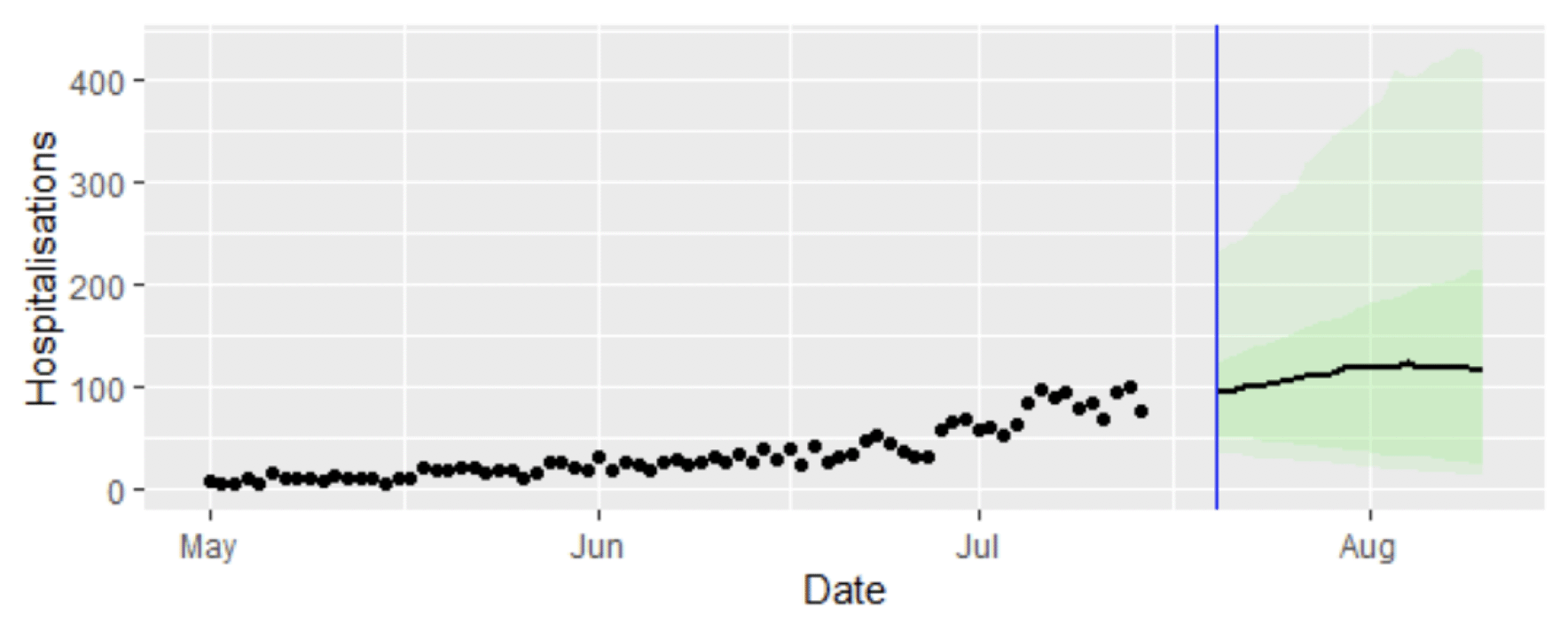
We are not projecting the numbers of people expected to die with Covid‑19 this week. The number of daily deaths has fallen to very low levels.
What we know about which local authorities are likely to experience high levels of Covid-19 in two weeks' time
We continue to use modelling based on Covid-19 cases and deaths using data to 19th July from several academic groups to give us an indication of whether a local authority is likely to experience high levels of Covid-19 in the future. This has been compiled via SPI-M into a consensus. In this an area is defined as a hotspot if the two week prediction of cases (positive tests) per 100K population is predicted to exceed a threshold, e.g. 500 cases.
Modelled rates of positive tests per 100K using data to 19th July (Figure 13) indicate that, for the week commencing 1st August 2021, there are 26 local authorities with at least a 75% probability of exceeding 100 cases per 100K[9].
Of these, 20 local authorities are expected to exceed 150 cases per 100K with at least a 75% probability. Only one local authority (Renfrewshire) is expected to exceed 300 cases per 100K with this probability[10].
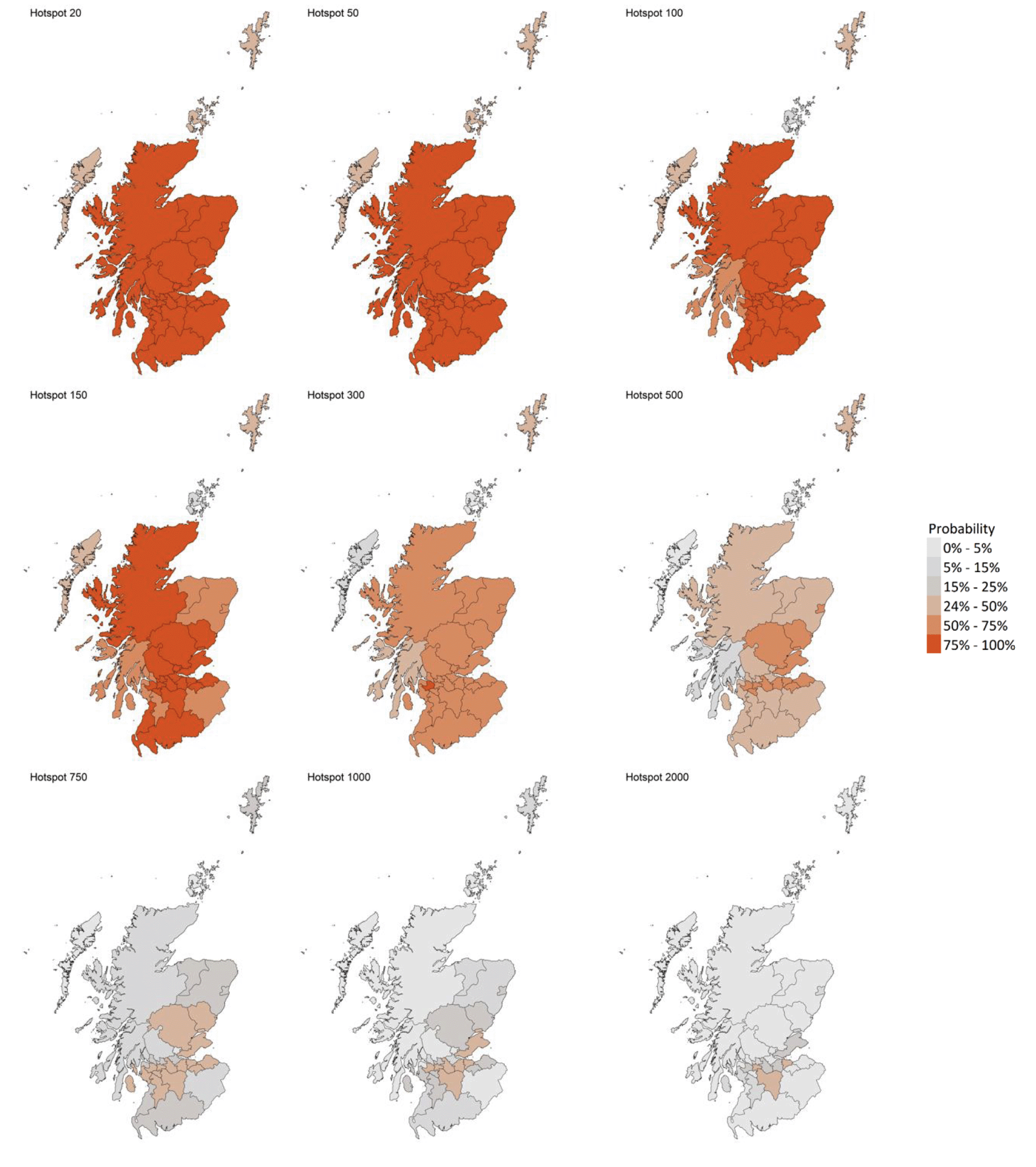
What can analysis of wastewater samples tell us about local
outbreaks of Covid-19 infection?
Levels of Covid-19 in wastewater collected at a number of sites around Scotland are adjusted for population and local changes in intake flow rate and compared to daily 7-day average positive case rates derived from Local Authority and Neighbourhood (Intermediate Zone) level aggregate data. See Technical Annex in Issue 34 of these Research Findings for the methodology.
Relative to the peak reported in the previous report, wastewater (WW) COVID-19 levels declined nationally to approximately 55 million gene copies per person per day (Mgc/p/d). This general trend is not followed at all sites (as of 20th July), with some showing more static levels. This will be monitored closely over the next few weeks[11].
In Figure 14, the blue line corresponding to the original 28 sites and green line representing the aggregate for the full set of sampled sites converge in the most recent week. This is because the original 28 sites, which are generally larger, were better sampled in the last week. In the recent dry weather, availability of flow or ammonia data is critical for normalisation for the wastewater data, otherwise results can be overstated. Fortunately, this data is available for many of the recent results. The results for Seafield, covering Edinburgh and parts of the Lothians, are show in Figure 15.
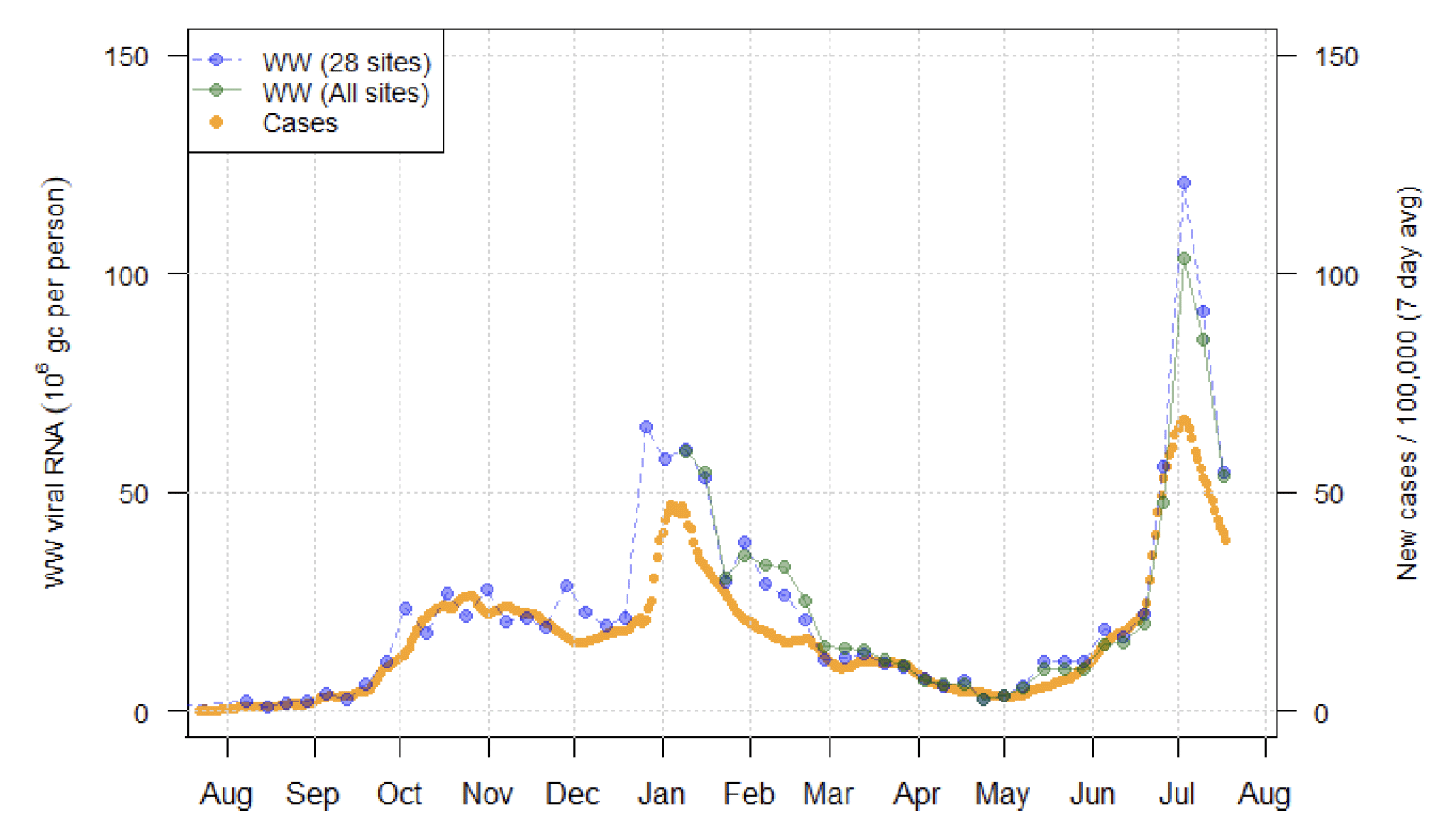
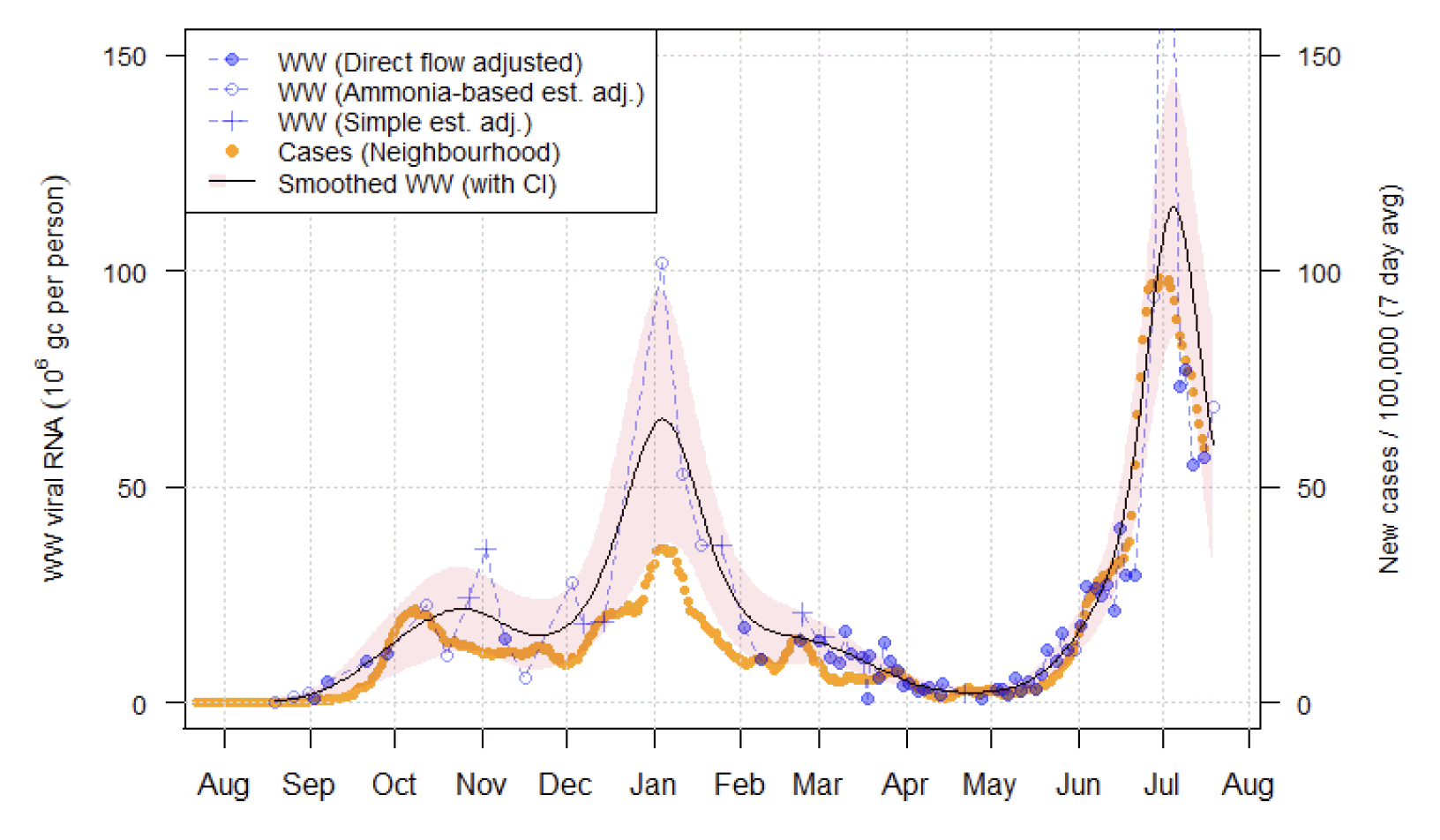
What estimates do we have of the number of people experiencing long Covid symptoms?
The Scottish Government has recently been modelling the number of people likely to experience long Covid symptoms. This has then been projected forward to estimate long Covid rates in the future based on Scottish Government medium term projection modelling.
This modelling estimates that at 23rd May 2021 between 46,000 (0.7% of the population) and 110,000 (1.9%) people were projected to experience symptoms for 12 weeks or more after their first suspected Covid infection in Scotland. When compared with the estimates of long Covid from the ONS Covid-19 Infection Survey (see blue bars on Figure 14), the ONS estimate that in the same period there were 68,000 people in Scotland who first had (or suspected they had) Covid-19 at least 12 weeks previously (95% confidence interval: 60,000 and 76,000). This is in-line with the modelled estimates at the 5th percentile of the better infection scenario (see Figure 9 for more details) in Scottish Government modelling, as shown in Figure 16. It should be noted that the Scottish Government estimates account for the whole population whereas the ONS estimates relate to self-reported long Covid for people living in private households only.
These are preliminary results, further data on rates of long Covid and associated syndromes as research emerges are required.
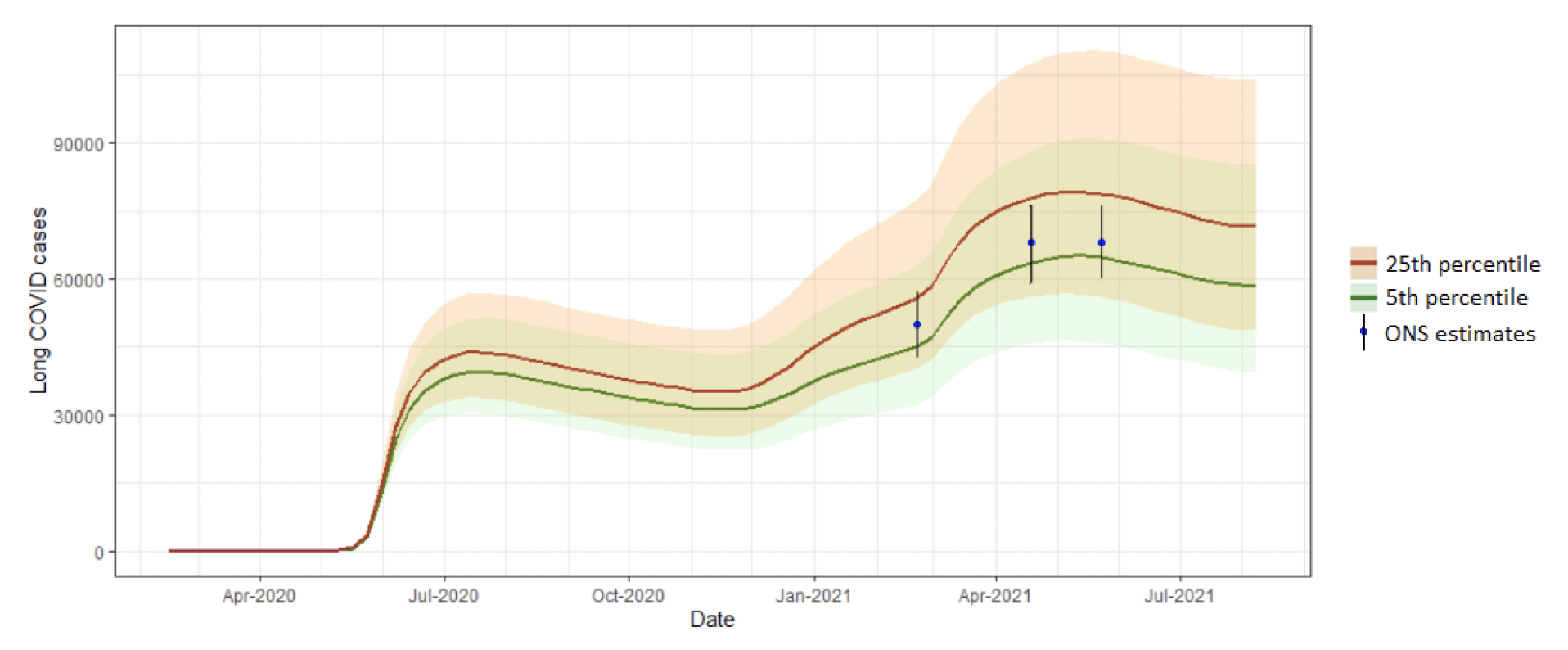
What next?
The modelled estimates of the numbers of new cases and infectious people will continue to be provided as measures of the epidemic as a whole, along with measures of the current point in the epidemic such as Rt and the growth rate. Further information can be found at https://www.gov.scot/coronavirus-covid-19.
We may report on exceedance in future weeks when the background levels of Covid-19 reduces so that it can be useful in identifying outbreaks.
Contact
There is a problem
Thanks for your feedback